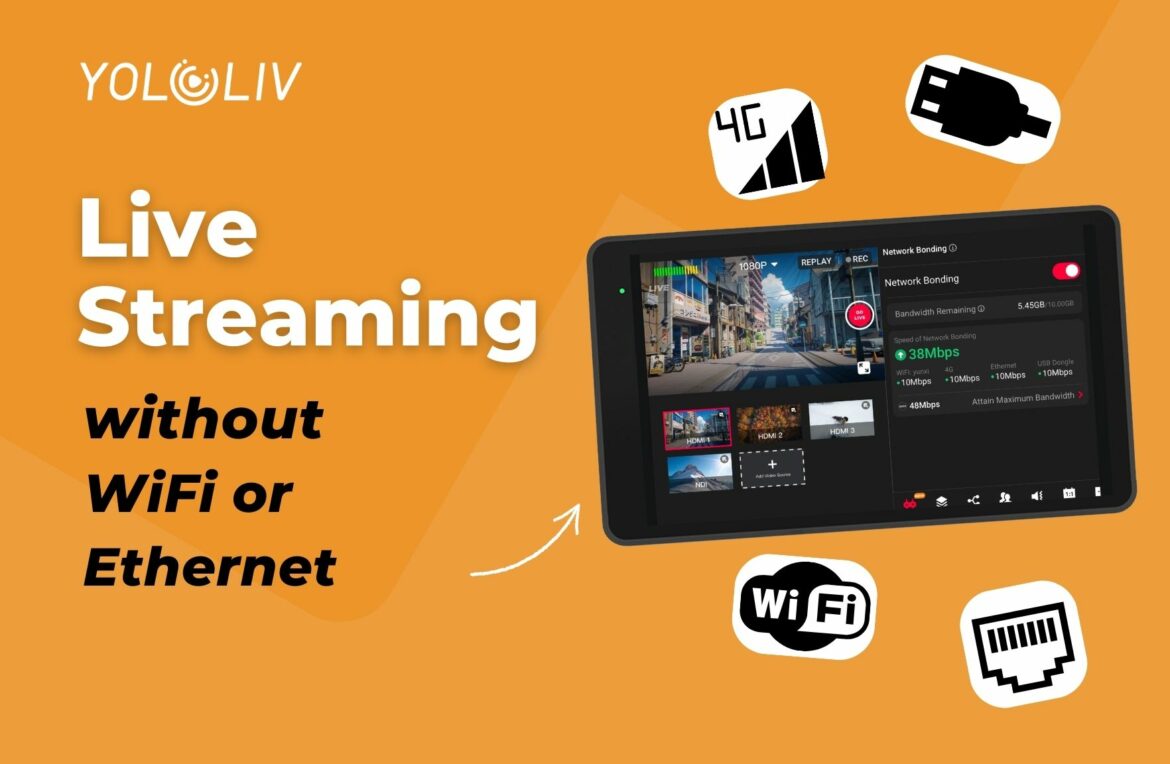With the increasing demand for high-quality live video streaming, it’s essential to ensure a seamless viewing experience for your audience, regardless of your location. While individuals in urban areas often have access to fast and reliable internet connections, those in remote or rural areas may face difficulties in achieving a stable connection. In the following sections, we will explore various methods and solutions that enable remote live streaming without relying on WiFi or Ethernet connections.
Remote Live Streaming with Poor Network Conditions
In many instances, network conditions and availability pose challenges for live streaming in remote locations. Outdoor events, rural areas, or situations with saturated airwaves can all affect the stability and quality of network connections. Smaller venues, which lack high-speed Ethernet networks, may not provide broadcasters with the necessary infrastructure to stream their content reliably. Similarly, breaking news coverage often requires immediate broadcasting from remote sites, where the network infrastructure may be damaged or overwhelmed. In such scenarios, it becomes crucial to know how to live stream without WiFi or cellular data.
Feasible Solutions for Streaming in Low Bandwidth Situations
To overcome the internet connection issues that arise in remote locations, several methods can be employed. Let’s explore some popular solutions that enable streaming when WiFi or Ethernet connections are unavailable.
1. Ethernet Cable Runs
Ethernet cables are commonly used for internet connections, but they have a limited length range. Typically, a single Ethernet cable can extend up to 328 feet (100 meters). To overcome this limitation, repeaters can be installed to extend the cable runs. By adding repeaters, a Cat5 Ethernet cable can be stretched up to 9,168 feet (2,800 meters). While this setup limits the maximum transfer speeds to around 10 Mbps, it is still sufficient for high-definition live streaming. Using a long Ethernet cable with an extender allows you to stream without relying on WiFi.
2. Satellite Truck
Satellite trucks offer a robust and reliable solution for live streaming from anywhere with sufficient sky coverage. These trucks provide fast internet connections and are rarely affected by interruptions, except during severe weather conditions. However, satellite trucks are expensive to rent, making them a viable option mainly for large-scale broadcasting projects with substantial budgets.
3. Network Bonding
Network bonding, also known as cellular bonding, involves combining multiple network connections to create a faster and more reliable connection. Dedicated hardware devices are used to bond Ethernet connections, cell networks (via Wi-Fi hotspots), and USB cell network dongles. These devices are typically mounted on cameras and connected to HDMI or SDI outputs. By leveraging network bonding technology, broadcasters can deliver reliable live streams even in areas with unreliable internet connections. This method allows you to stream without WiFi by combining Ethernet and cellular networks.
4. Mobile Hotspots
Mobile hotspots provide a simple solution for accessing the internet in remote areas. By using a mobile hotspot device, which utilizes cellular data, individuals can establish an internet connection. Depending on the strength of the local signal, this method can be sufficient for live streaming, especially with modern 4G LTE networks that offer upload speeds exceeding 5 Mbps. However, mobile hotspots have limitations such as limited battery life and fluctuating signal speeds, making them relatively less reliable compared to other solutions.
Network Bonding: A Reliable Remote Streaming Solution
Among the various methods discussed, network bonding stands out as a reliable solution for remote live streaming. By utilizing dedicated hardware devices, network bonding combines multiple network connections, such as Ethernet and cellular networks, into one robust link. This approach ensures a seamless streaming experience even in low bandwidth situations. Network bonding technology enables broadcasters to tap into all available signals, delivering high-quality broadcasts from the remotest locations.
Conclusion
Achieving a stable and reliable internet connection is crucial for live streaming, especially when WiFi or Ethernet access is limited or unavailable. By considering alternative solutions such as Ethernet cable runs, satellite trucks, network bonding, and mobile hotspots, content creators can overcome the challenges associated with remote live streaming. Each method offers its advantages and limitations, depending on the specific requirements and budgetary constraints. With the right technology and equipment, it is possible to deliver high-quality broadcasts from even the most remote locations.
28,112 total views, 11 views today

Pauline is a Marketing Specialist at YoloLiv, with over three years of experience in overseas digital marketing. She aims to produce high-quality and practical content for all tech lovers and dig deeper into the live streaming fields.


